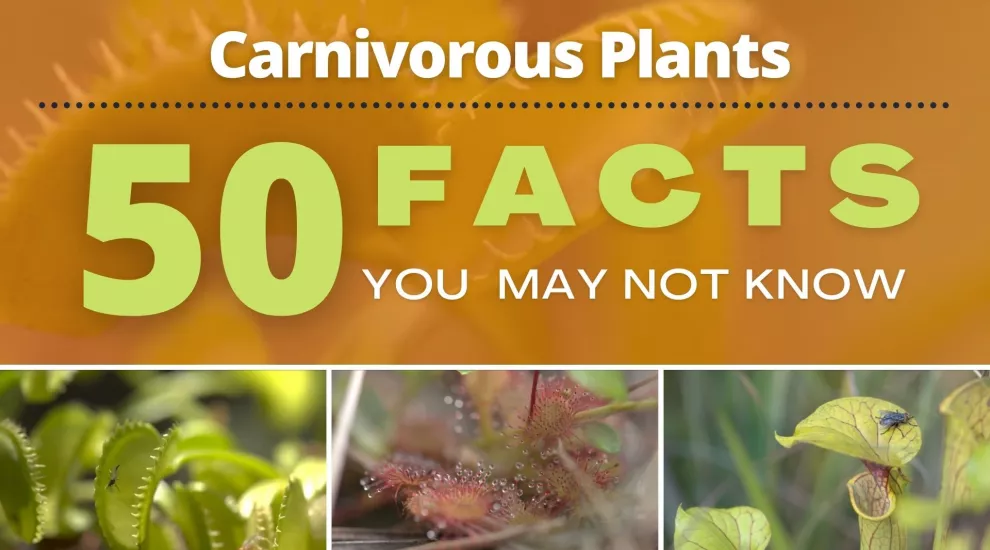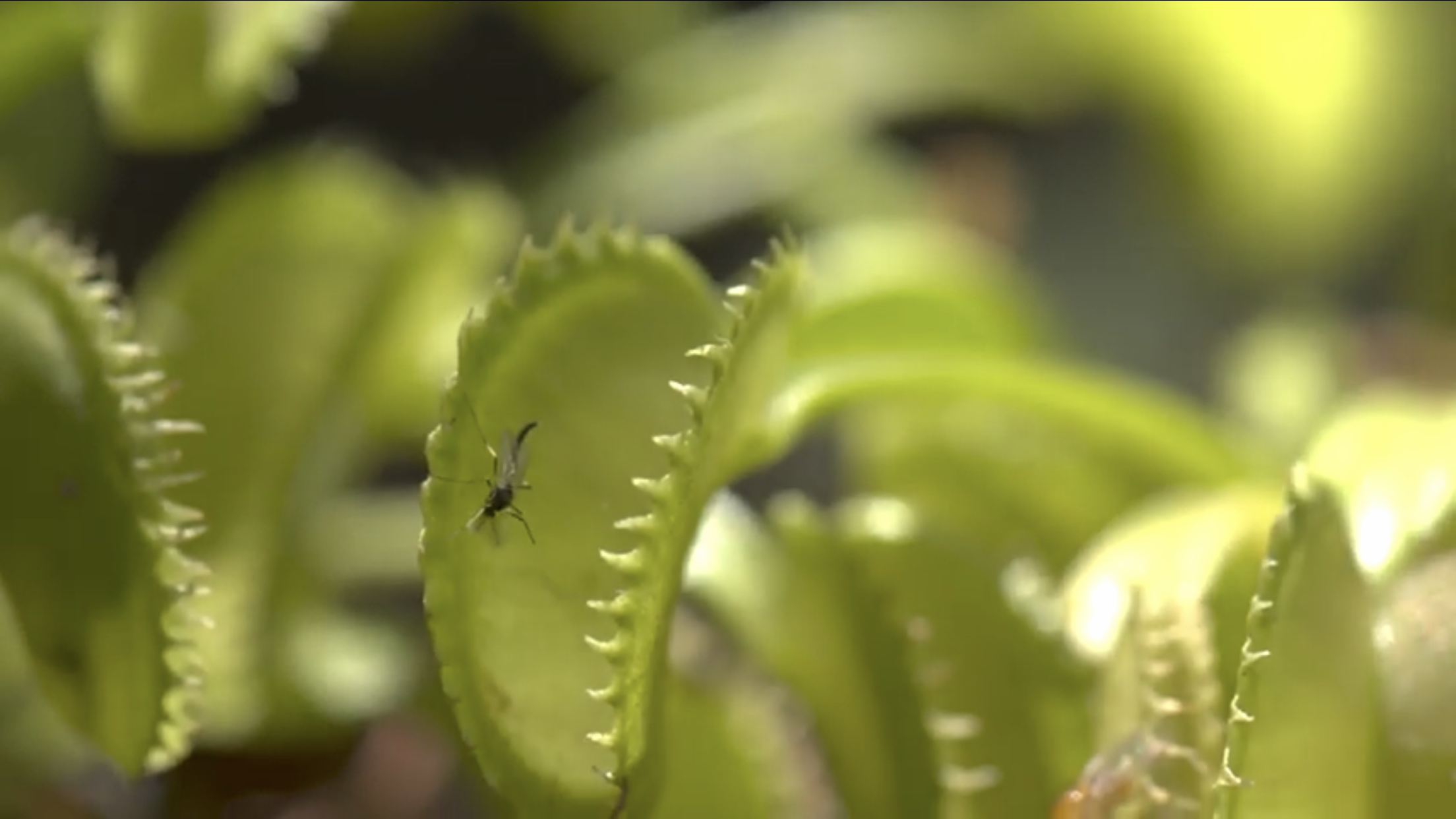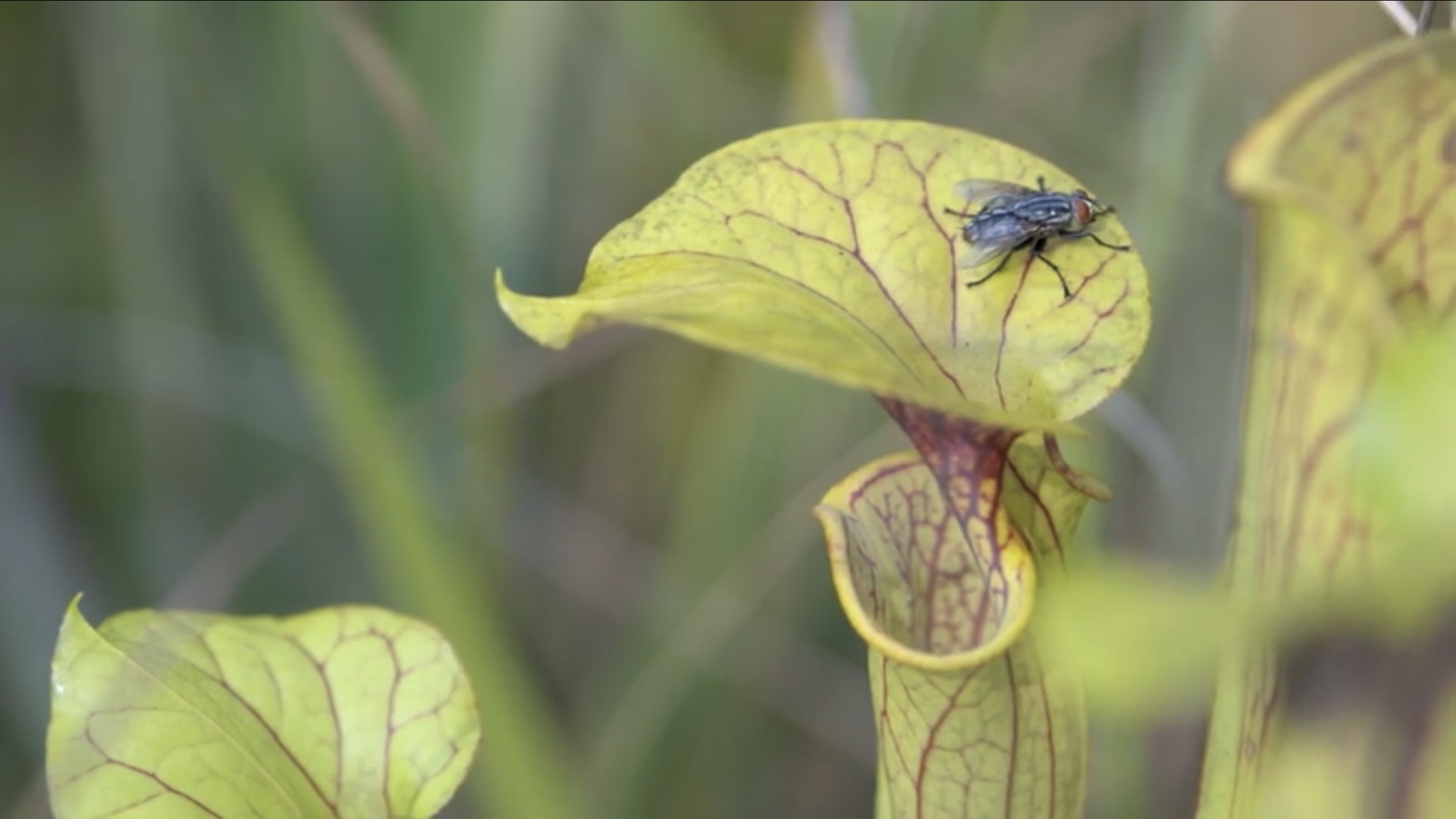
In South Carolina’s ecosystem, carnivorous plants are some of the most popular features to be found in the Palmetto State’s natural environment.
Carnivorous plants are a species of plant that traps small organisms such as flies to get their nutrients, rather than the most common way of photosynthesis.
These plants reside in several areas of South Carolina, which is considered to be one of the most diverse and rich features of land across the country, ranging from the upstate to the coast.
For further information on carnivorous plants in South Carolina, here are 50 unique facts about them!
Carnivorous plants are among 3,000 recorded plant species in South Carolina.
More specifically, there are around 600 known species of carnivorous plants.
Out of these, 31 carnivorous plant species are present in South Carolina.
New species of carnivorous plants are also being discovered each day throughout South Carolina and the world.
Some carnivorous plants that are in the state are exceedingly rare compared to other similar plants.
Because of the presence of carnivorous plants, it allows South Carolina to have one of the most diverse and unique ecosystems in the country.
This is because of its geographic size and variety of natural habitats that allows carnivorous plants to thrive.
Carnivorous plants are mostly small in size, though there are some that can be large even with the same gene.
Carnivorous plants do have to face off against surrounding flora throughout South Carolina’s environment.
Carnivorous plants are usually found in areas that have low soil nutrients around them.

Carnivorous plants can also reside in areas with little forest and in underwater environments.
Carnivorous plants come in a wide range of colors, shapes, and sizes.
Their main adaptations vary from mechanical defenses such as thorns and spines to brightly hued flowers.
Carnivorous plants are one of the few plants in South Carolina that is not used for pollination by insects such as bees.
Over the years, carnivorous plants have come up with some fascinating wild ways of taking adaptations to an entirely new level.
Carnivorous plants are also known as “insectivorous plants.”
These plants are distinguished from other plants by their ability to capture and digest plants or other small animals.
They can also capture smaller insects in their surrounding environment.
Carnivorous plants’ trapping mechanism is based on whether they are motivated to catch prey.
Often mistaken by others, carnivorous plants do not eat their prey for energy.
Instead, they digest their prey to get nutrients absent in the soil of their environment.
While this adaptation seems like an upgrade, carnivorous plants do face disadvantages like other plants.
Their modified leaves that are used to trap their prey are not as sufficient at capturing the sunlight that is necessary for photosynthesis.
Photosynthesis is the process in which green plants use sunlight to make their own food, something that is excluded in carnivorous plants’ day-to-day routines.
Because of this lack of resources, carnivorous plants need a bright, sunny environment, and they do not compete well against other plants because of this need.

The most easily recognized carnivorous plant in South Carolina is the Venus Flytrap.
Venus flytraps have the rarest active mechanism in carnivorous plants which is known as the “snap trap.”
The snap trap that the venus flytrap has consists of two specialized leaves that comes with slender “trigger hairs” on them.
“Trigger hairs” on the venus flytraps’ leaves are activated when they are bent in a particular situation.
Once the venus flytrap is activated, the leaves seal shut, releasing digestive juices to break down its food.
Like the Venus flytrap, the Pitcher Plant secretes sweet smelling nectar.
This allows pitcher plants to attract insects near their peristome or rim.
The slippery surface near the pitcher plant’s mouth causes the prey to fall inside its funnel-like body.
This passive approach that the pitcher plant does is known as a pitfall trap, which prevents animals from escaping with downward pointing hairs lined along the inner wall of the plant.
Eventually, the prey captured will drown in the fluid-filled cavity and is digested shortly after.

One of the most unique carnivorous plants in South Carolina is the Sundew Plant.
The sundew plant is also well known for its nickname being known as “drosera.”
The sundew plant has tiny tentacle-like hairs covering its leaves that are tipped with what looks like a drop of dew.
These glistening dewdrops are a sticky mucilage substance secreted by the plant that act as an adhesive.
When the “glandular tentacles” are touched, adjacent tentacles bend gradually towards the struggling prey.
Following this, special enzymes are then secreted in order to break down the catch and absorb its nutrients.
Like many other plant species in South Carolina, many carnivorous plants are in decline, and some have even become protected species.
Some of the major threats that carnivorous plants face includes habitat alterations, poaching, and dealing with competitive species they must face off nearby.
Poaching is the illegal hunting or capturing wild animals, something that harmfully affects all carnivorous plants.
Since 1976, groups like the South Carolina Department of Natural Resources have been able to protect these plants by establishing nature preserves.
Today, there are 76 preserves of carnivorous plants in South Carolina.
As a whole, these preserves cover nearly 100,000 acres of land statewide.
Conservation efforts of the carnivorous plants include prescribed burnings to eliminate unhealthy competition between carnivorous and other nearby plants.
They also track rare carnivorous plants in the state in a database for wildlife management and reintroduce carnivorous plant species to their natural habitat.
These critical actions help these ferocious, yet delicate plants continue to flourish and allow everyone to enjoy their beauty in the wild.
For more information on carnivorous plants, be sure to look at our What’s Wild episode on them, where we take a more digitalized look.
{"preview_thumbnail":"/sites/default/files/styles/video_embed_wysiwyg_preview/public/video_thumbnails/xnoXsRGsEoM.jpg.webp?itok=kerNRIxv","video_url":"https://youtu.be/xnoXsRGsEoM","settings":{"responsive":true,"width":"854","height":"480","autoplay":false},"settings_summary":["Embedded Video (Responsive)."]}

